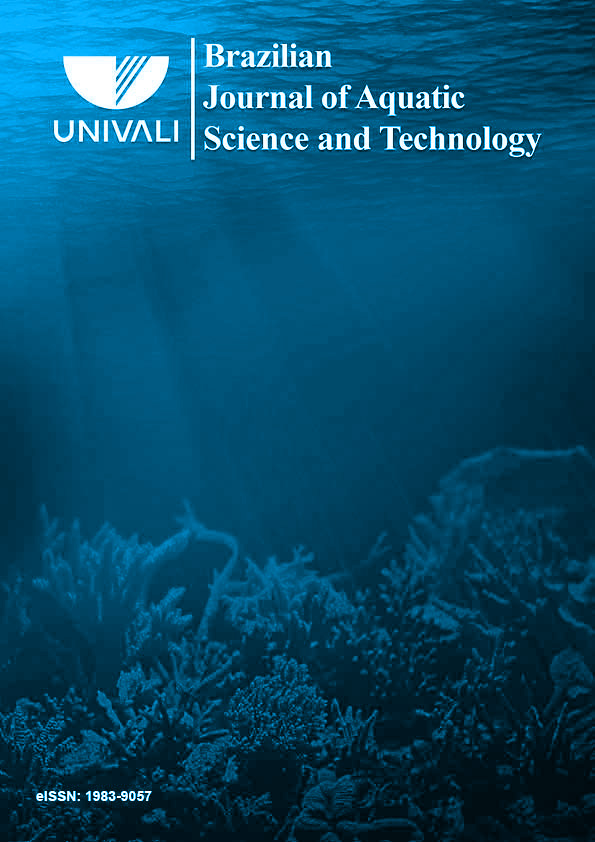Analysis of the dredging effects on current circulation and salinity of the Itajaí-Açú estuary
DOI:
https://doi.org/10.14210/bjast.v27n1.19245Resumo
The Itajaí-Açú river is the largest source of drainage in the state of Santa Catarina (Brazil). At the mouth of this river is located the Itajaí-Açú estuary, which is a highly stratified estuary, dominated mainly by river discharge. The port of Itajaí is located at the mouth of this estuary, which is one of the most important Brazilian ports. Due to the presence of the port, the Itajaí-Açú estuary is constantly dredged. Therefore, the main objective of this paper is to analyse the effects of the dredging of 2011, which deepened the channel from 11 m to 14 m, on the estuary circulation of the Itajaí-Açú river in comparison to the estuary circulation in 2008. Thus, data on river discharge, recorded by a hydrometric station, and current velocity vertical profiles, recorded by an Acoustic Doppler Current Profiler (ADCP) anchored in the channel of the estuary were analysed. A salinity analysis was also performed with data recorded by a CTD to compare the salinity stratification of the water column in the study period. Results showed an increase in current velocity in the estuary after the 2011 dredging. In both study periods (2008 and 2011), currents were ebb-directed to the river mouth. Results suggest that the dredging has modified the estuarine circulation as the currents intensified. Salinity results show an increase in values after the dredging (2011), being the water column clearly stratified.
Downloads
Publicado
Edição
Seção
Licença
Autores que publicam nesta revista concordam com os seguintes termos:
- Os Autores mantém os direitos autorais e concedem à revista o direito de primeira publicação, com o trabalho simultaneamente licenciado sob a Creative Commons Attribution License que permitindo o compartilhamento do trabalho com reconhecimento da autoria do trabalho e publicação inicial nesta revista.
- Autores têm autorização para assumir contratos adicionais separadamente, para distribuição não-exclusiva da versão do trabalho publicada nesta revista (ex.: publicar em repositório institucional ou como capítulo de livro), com reconhecimento de autoria e publicação inicial nesta revista.
- Autores têm permissão e são estimulados a publicar e distribuir seu trabalho online (ex.: em repositórios institucionais ou na sua página pessoal) a qualquer ponto antes ou durante o processo editorial, já que isso pode gerar alterações produtivas, bem como aumentar o impacto e a citação do trabalho publicado.

